Exploring God’s handiwork
Lipscomb launched the career of James Savage, aerospace engineer now working to send explorers to Mars and beyond.
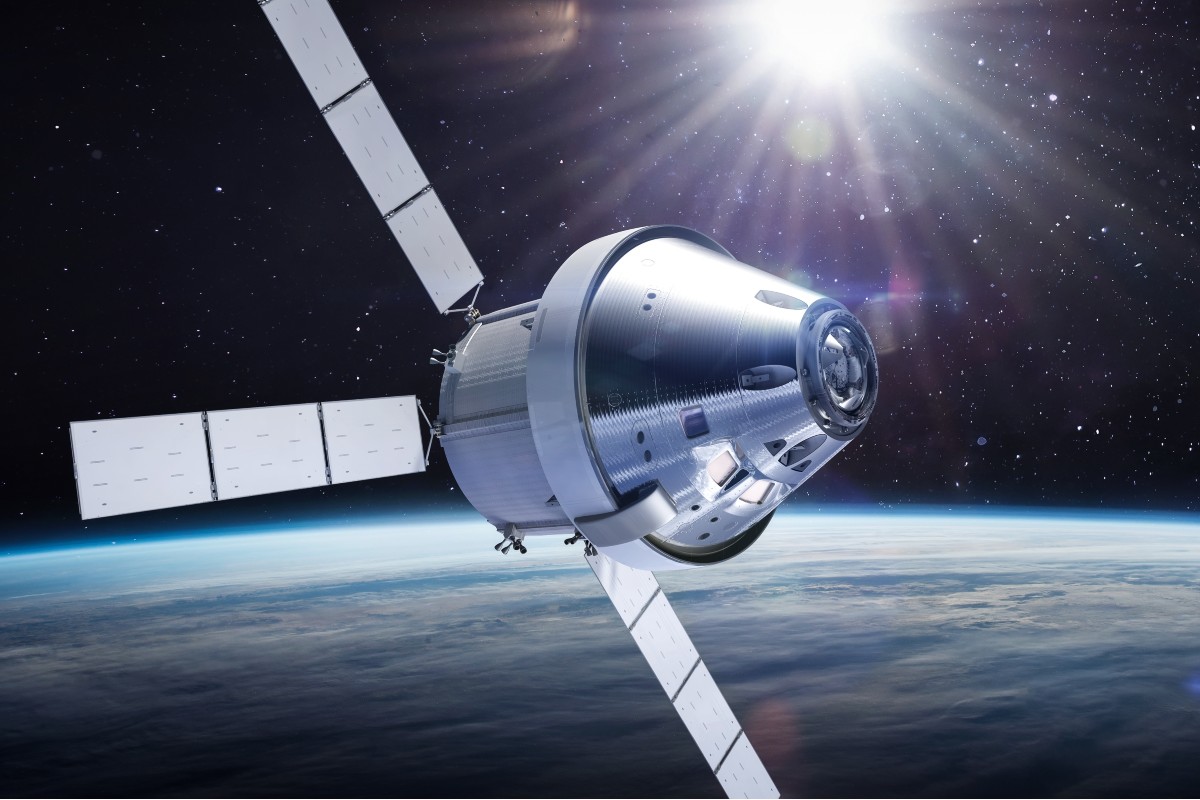
Alumnus James Savage had a hand in designing the unmanned Orion capsule launched in November 2022. Orion traveled to the moon, lapped it and returned to earth on a 25-day mission.
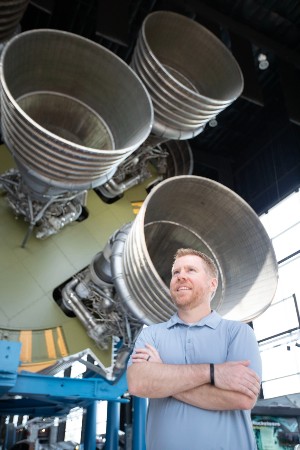
Outer space has long fascinated humankind. James Savage (BS ’04) is no exception.
When he tilts his head to the sky, he sees more than clouds and stars. He sees men and women exploring deep space for science not yet dreamed of. He sees the four men and women expected to orbit the moon in 2025 and the first people to travel to Mars in the following decades.
When he looks to the sky, Savage sees the future … and a glimpse of God.
“God gave us the universe. He gave us inquisitive minds, and he told us to manage the world for Him,” said Savage, the chief engineer for Boeing’s Exploration Upper Stage (EUS), a portion of a future rocket for NASA intended to carry astronauts to the moon and later to Mars. “It’s fascinating to combine all those things in space exploration in a way that no previous generation has been able to do.”
Savage has been designing rockets since he graduated in 2004 with his engineering mechanics degree from Lipscomb, but in today’s space landscape, with dozens of companies involved in the spaceflight industry, where “space tourism” is an actual thing and NASA is focused on deep space exploration, it is truly a more exciting time than ever before to be in spaceflight design, he said.
“I love solving problems and this is a target-rich environment,” he said. “It is amazing when you realize that you are working on something that has never crossed someone’s desk before.”
Savage’s job is part of NASA’s Artemis program, named after the Greek goddess of the moon. Artemis is focused on launching deep space exploration to the moon. The Artemis I mission involved an unmanned vehicle called Orion that was launched in November 2022 by Boeing’s Space Launch System (SLS) super heavy-lift rocket.
Savage had a hand in developing both SLS and Orion, which traveled to the moon, lapped it and returned to earth on a 25-day mission, “flying farther than any spacecraft built for humans has ever flown,” according to Space News.
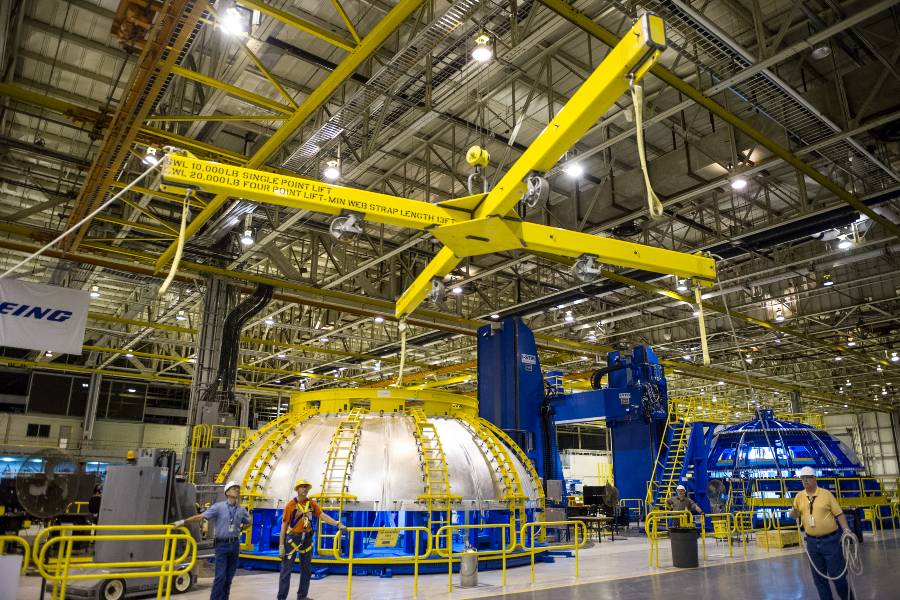
Savage travels often to the manufacturing facility for the SLS, called the Michoud facility, in New Orleans. Photo courtesy of Boeing.
Artemis II, in 2025, will be the program’s first manned mission to fly about 6,400 miles beyond the moon on a 10-day mission. NASA announced in 2023 that the Artemis II crew will include the first woman and first person of color on a lunar mission.
Artemis III will also be a manned mission to the moon, said Savage. Artemis I and II both use the SLS Block 1 rocket that he has worked on since 2012.
Later this decade, Artemis IV will launch using the next generation of the SLS rocket, called Block 1B, and the EUS, Savage’s current project and the portion of the rocket that the crew and payload will take to the moon and beyond in the decades to come.
The EUS is critical to future space travel as the Artemis program is just the first step of NASA’s larger goal—the Moon to Mars program.
“Humans have a built-in urge to explore and push boundaries,” said Savage. “Every time we push boundaries, those accomplishments become more and more reasonable and commonplace. Understanding the moon, Mars and the rest of our solar system and gaining experience in those types of environments allows us to better use the unique situation that space gives us to do additional STEM work.”
A spacecraft like nothing seen before
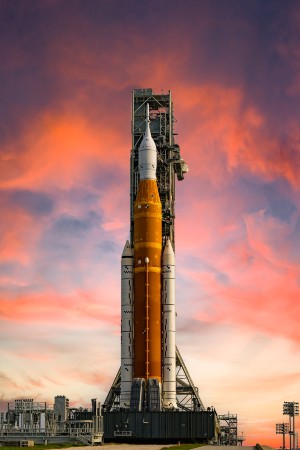
The Block 1B SLS, with the addition of the EUS will enable deep space exploration on a scale that is truly unique, said Savage.
“The EUS brought with it all-new sets of challenges and opportunities, because it lives most of its life as a spacecraft and has a much more complicated mission profile than anything I have worked on previously,” Savage told Space News.
As the chief engineer, he is responsible for design, development, production, verification, delivery and supporting NASA for the rocket launch. Savage ensures that the engineering teams are completing their technical work, meeting requirements and fully understanding the risks involved, and supports the management team to make decisions about design and advises them on technical risks.
His job keeps him traveling a lot, especially from his home base at Marshall Space Flight Center in Huntsville, Alabama, to the manufacturing facility for the SLS in New Orleans and the Kennedy Space Center in Florida.
“The Block 1B SLS, with the addition of the EUS will enable deep space exploration on a scale that is truly unique. It is like nothing else the United States or any other country has ever had available to it,” said Savage.
Due to larger propellant tanks and engines, the EUS will allow NASA to send astronauts and larger payloads, such as small lunar habitats or scientific experiments, to the moon on a single mission.
“The performance of the EUS enabled SLS offers a lot of flexibility for exploration that can also translate into cost savings and accelerated science,” said Savage.
Looking to Mars and beyond, its capability for carrying higher masses and higher velocity can shorten travel times, thus reducing many of the concerns for exploration, both human and robotic, he said.
“Crews will spend less time in transit, and for robotic trips to the outer solar system, ground crews will spend less time and money waiting on their payloads to arrive at their target destination. These savings are measured in weeks and months for the inner solar system and years for the outer solar system.”
In addition, the EUS is being designed with a layout, materials, fault tolerance and redundancy to make it resilient to radiation, space weather, micrometeoroids and orbital debris, safeguarding the crew and hardware against these space environments.
“When you meet the crews, you realize you have to be on your game,” said Savage. “We keep photos of the Artemis II crew up in our office. We have them posted all over the factory to remind us all that we are doing something amazing but there are people relying on us to do it at the highest level of quality and professionalism. We’ve got their safety and their jobs in our hands.”
From drawing rockets to designing rockets

A model SLS rocket at the U.S. Space and Rocket Center.
Even as a child he had been interested in space, collecting patches from all the Space Shuttle missions, drawing rockets and visiting aerospace-related museums and sites with his family. But even upon entering Lipscomb to become an engineer, he assumed that working on spacecraft would be out of reach for an average guy from Montgomery, Alabama.
A class project to design the cross-section of an airplane wing gave him confidence that perhaps aerospace was something he had the skills to do, and when Lipscomb alumnus Dane Richardson (BS ’83) came from Boeing in Huntsville, Alabama, to speak at Lipscomb, he was further convinced and took the opportunity to make a valuable connection.
He started to apply for jobs at Boeing and landed several interviews. For one interview, he drove to Decatur, Alabama, and they gave him a tour of the rocket factory.
“I was surrounded by rockets for the first time, and I was really drawn to the manufacturing environment where I got to see and touch hardware on a daily basis. I was sold first thing,” he said.
Immediately upon graduation, Savage began work in Decatur for Boeing, a job which not only allowed him to work on the Delta II heavy rocket, but also kept him close enough to Nashville to spend time with his then-fiance Dana Woods Savage (BS ’05), and to work in a blue jeans-friendly environment, a big plus for Savage. His first mission was the inaugural launch of the Delta IV Heavy.
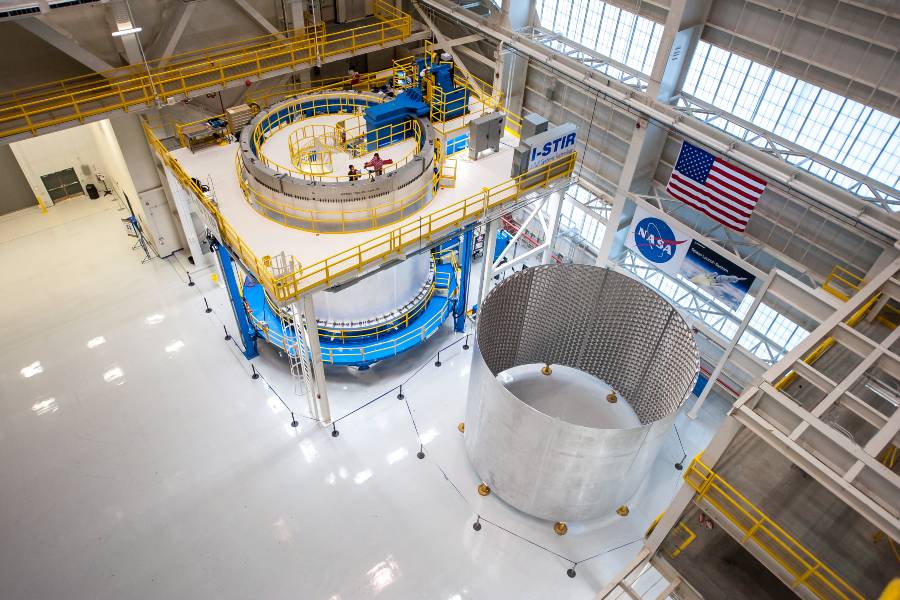
Artemis I and II both use the SLS Block 1 rocket, under construction here, that Savage has worked on since 2012. Photo courtesy of Boeing.
Although the company went through various changes during his career, Savage has continued to remain based in Decatur while still jumping on new opportunities to grow in his career. He worked on Delta II, Delta IV and Atlas V rockets and moved beyond design and production to other areas including launch operations, allowing him to travel to launch sites on both the East and West Coasts.
Joining SLS allowed him to apply his skills to a new design for deep space human exploration and for the first time, to build a team of his own, which has grown from 10 to 500 people.
Lipscomb’s liberal arts education has served him well, in a job that requires not only technical problem-solving, but also navigating politics, building relationships and constant communication.
“Having a nice broad liberal arts education, especially one focused on faith and through the church, is something that is very special about Lipscomb. It has allowed me to use those experiences to do my job better and to be a better leader and a better employee,” he said.
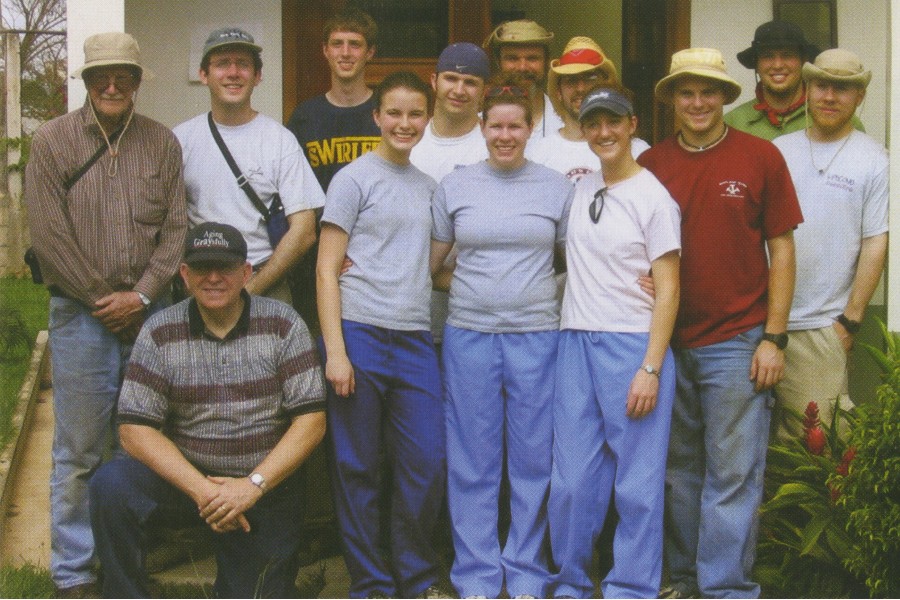
Members of the original 2004 Team (not in order): Fred Gilliam, Kristopher Hatchell, Chad Jacobs, Kathryn (McDonald) Kornrumpf, Amy (Gilfilen) Lucas, Matthew Lucas, Kirk Pippin, Karla (Childress) Rodkey, James Savage, Matt Sheppard and Lee Whitney.
Savage was a member of Lipscomb’s first engineering missions team to Honduras in 2004, where he learned flexibility, how to turn challenges into opportunities and a recognition that “God’s world is a big place and I am just a little piece of it,” he said.
He feels that same humbling awe of God’s creation in his job today, especially when the photos from the moon-bound Orion capsule in 2022 were transmitted back to earth, including a “selfie” of the capsule with the earth and moon in the background.
“It was such a cool moment. When I saw the earth floating just off a platform I had helped design, on a mission I helped to work on, it really makes you realize just how small you are,” said Savage.
“You read in the Bible about God putting the moon and stars in their places. We sing songs about how ‘He’s got the whole world in his hands.’ It really brings those words into perspective, that God allows us to have a place in his handiwork.
“You can overcome a lot of hard days with those kinds of thoughts.”